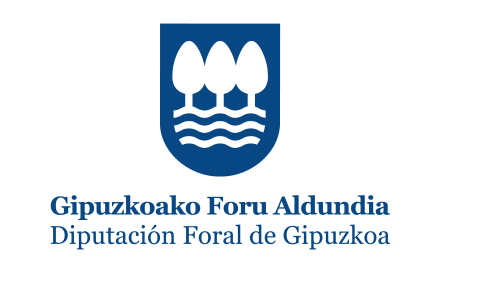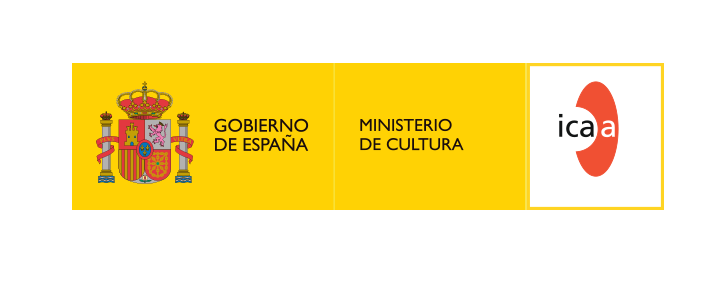Thematic retrospective: .doc – New paths of non-fiction
Films
Films
Thematic retrospective: .doc – New paths of non-fiction
Thematic retrospective: .doc – New paths of non-fiction
Apichatpong Weerasethakul
Thailand
83 min.
This film is an experimental mix of documentary and fiction made using the ?exquisite corpse? technique favoured by the surrealists and through which a series of words or images is collectively assembled. With no specific synopsis, the film crew travels all over Thailand giving people carte blanche to continue a story about a handicapped boy and his teacher.
Julien Temple
UK-USA
108 min.
The Sex Pistols lasted for little more than two years and recorded a single LP; but they completely changed the music scene. This documentary brings a searing portrayal of the group, following their rise from the dirty London alleys of the 70s, at a key moment in British social history, to their final blowout while on tour in the USA.
José Luis Guerin
Spain
125 min.
In Barcelona?s Raval neighbourhood, living under the threat of plans for major renovation, work starts on a new block of flats. Evolution of the construction, from the time when the site is still a piece of land on which boys play football until its final stages, marks the locals? lives.
Naomi Kawase
Japan
50 min.
Medium-length film
A film about love, memory and loneliness. Naomi Kawase tries to come to terms with her dead father, the man she had no contact with while growing up. She considers getting the same tattoo as he had.
Claude Lanzmann
France
95 min.
Documentary born from an interview granted by Yehuda Lerner to Claude Lanzmann in 1979, while shooting Shoah, his famous 1985 movie on Nazi barbarianism. Sobibor concentrates solely on narrating the only successful revolt to occur in an extermination camp: some twenty Jewish prisoners killed 16 German officers with axes, cut off the electricity and managed to escape.
Harun Farocki
Germany
58 min.
In 1991, when images of the Gulf War flooded the international media, it was virtually impossible to distinguish between real pictures and those generated by computer. With the help of archival and original material, Harun Farocki defines the relationship between military strategy and industrial production, shedding light on how the technology of war finds applications in everyday life.
Jørgen Leth, Lars von Trier
Denmark-Switzerland-Belgium-France
90 min.
In 1967, Jørgen Leth made the 13-minute short Det perfekte menneske (The Perfect Human), a documentary on human behaviour. In 2000, Lars von Trier challenged Leth to shoot five ?remakes? of that short, each obstructed by a condition to be scrupulously respected by the moviemaker. Using this procedure, the two directors finally question the conventions of the documentary genre.
Nick Broomfield, Joan Churchill
UK-USA
90 min.
Second documentary by Nick Broomfield on Aileen Carol Wuornos, a highway prostitute who was executed in 2002 for killing seven men in the state of Florida. Includes Broomfield?s testimony at Aileen?s trial.
Errol Morris
USA
95 min.
The life and times of Robert McNamara, former US Secretary of Defense under presidents Kennedy and Johnson involved in the controversial decisions taken in the first part of the Vietnam War. The title refers to the military saying ?fog of war?, a concept used to describe the level of ambiguity in situational awarness experienced by participants in military operations.
Albertina Carri
Argentina-USA
89 min.
The director invites the spectator to reflect on the construction of an identity - her own, that of a whole society - based on an absence: that of her parents, disappeared and murdered by the last Argentinean military dictatorship. Stories and photographs shape a reality set in the past and screened in the present.
Jonathan Caouette
USA
88 min.
Jonathan Caouette, son of a dysfunctional Texan family, brings a psychedelic whirlwind of memories, family snapshots, home movies filmed from the age of 13, video diaries, early short films... Through cinema, Caouette learned to shake off the childhood ghosts, the neglect, the abuse, the schizofrenia of the mother whose rape he witnessed, his time in charity institutions, autodestruction in a nutshell.
Wang Bing
China
555 min.
Documentary in three parts: Rust, Remnants and Rails. Filmed between 1999 and 2001, showing how the industrial belt of Shenyang?s Tiexi district, once an example of the vibrant Chinese socialist economy, is slowly succumbing to decadence.
Rithy Panh
Cambodia-France
101 min.
During the 4-year reign of the Khmer Rouge in Cambodia (April 1975-October 1979), a quarter of the country?s population was exterminated. In a paranoic system that saw enemies everywhere it turned, any sign of dissidence was enough to wind up in Security Prison S-21. The stars of the film (real S-21 guards and survivors) speak openly about their experiences in that hell.
Thom Andersen
USA
169 min.
Of all cities in the world, few are mythologized more in film and television than Los Angeles. Thom Andersen makes an in-depth examination of the ways the city has been depicted, both when meant to be anonymous and when under the spotlight itself. Along the way, he expresses his concerns over how the real city and its people are misrepresented and distorted by the prism of popular film culture.
Ulrich Seidl
Austria
87 min.
The camera follows the prayers and conversations with Jesus of six regular Christian church-goers, although they each have their reasons for attending. Thus, Ulrich Seidl offers a special view of Christianism and its followers. We observe the lives of these believers through the way they communicate their needs and concerns in prayer.
Ross McElwee
USA-UK
107 min.
North Carolina produces more tobacco than any other state in America. Ross McElwee, whose great-grandfather created the famous Bull Durham brand of tobacco, takes the spectator on an autobiographical journey across the social, economic, and psychological implications of tobacco growing, while rescuing an obscure Hollywood melodrama purportedly based on this curious man that was his great-grandfather.
Pirjo Honkasalo
Finland-Denmark-Sweden-Germany
106 min.
Chechenya is immersed in a never-ending war and children suffer the consequences. On Kronstadt Island, off Saint Petersburg, a military academy was founded for orphaned boys. There they are trained as soldiers, having it instilled upon them that their enemies are the Chechens. In Chechenya, Xhadizhat Gataeva acts as mother to 63 children gathered from among the ruins of the war-torn city of Grozny.
Michael Moore
USA
122 min.
Starts with the controversial election of George W. Bush in 2000, culmination of his rise from mediocre Texan oil pawn to President of the USA, going on to describe the underhand business relations between his father and the Bin Laden family. The film also looks closely at events in the USA following 11 September 2001 and how the Bush Administration turned the World Trade Center attack to his own political advantage.
Michel Khleifi, Eyal Sivan
Belgium-Germany-France-UK
270 min.
In the summer of 2002, filmmakers Eyal Sivan, an Israeli, and Michel Khleifi, a Palestinian, spent two months travelling through Palestine-Israel from north to south. Calling their travels Route 181, they follow the imaginary border adopted in the shape of Resolution 181 by the UN on 29 November 1947. This route considered the partition of Palestine into two states, one Jewish and the other Arab. Along the way, they give voice to the Israelis and Palestinians who live on this border.
Yervant Gianikian, Angela Ricci Lucchi
Italy
71 min.
This compilation of archive footage, devoid of dialogue, is a documentary on the horror of war. The images, showing impoverished Austrian children in 1918, Russian children who died in 1920, the mutilated faces and broken bodies of 1st World War veterans, Mussolini?s rise to power and the Italian invasion of Abyssinia, are chilling.
Werner Herzog
Germany-France-Austria-UK
80 min.
Earth is no longer inhabitable and a group of astronauts orbits around the planet, unable to land. Using incredible documentary images, with the testimony of the astronauts involved in the Galileo mission, Herzog creates a spectacular sci-fi fantasy.
Avi Mograbi
Israel-France
100 min.
A documentary on the treatment of Palestianians by members of the Israeli army. Avi Mograbi draws an analogy between the Jewish myths of Samson and the Zealots who committed mass suicide in Masada and the terrible experience of today?s Palestinians. He contrasts images with groups of Jewish tourists receiving enthusiastic explanations of Samson?s feats with the humiliating treatment of Palestinians at the Israeli checkpoints.
Jeff Feuerzeig
USA
110 min.
Documentary revealing the fascinating and terrible tale of North American singer-songwriter Daniel Johnston. From very early on in life, Daniel showed signs of artistic creativity through his comics and Super-8 films. But this genius a manic depressive driven by drugs and mental illness to have imaginary meetings with the Devil.
Sergei Loznitsa
Russia
52 min.
The documentary comprises footage of the Leningrad Blockade during World War II gathered from archives in Moscow by Sergei Loznitsa. Using the images without their original sound and superimposing a meticulously reconstructed soundtrack, the everyday scenes of the siege seem to be set in the present day.
Joaquim Jordà
Spain
112 min.
The story starts with an article published in El País about the case of Esther Chumillas, an 18 year-old from Cuenca suffering from agnosia since the age of 15 due to a wrongly diagnosed meningitis. Film director Joaquim Jordà, himself a sufferer of alexia and agnosia following a stroke, got in touch with the girl. Más allá del espejo was screened out-of-competition in the Official Selection at San Sebastian 2006.
Juan Carlos Rulfo
Mexico
84 min.
Mexican legend has it that the Devil asks for souls to prevent bridges from collapsing while under construction. This film follows the story of several workers involved in building one of these bridges in Mexico city. The idea is to look at their everyday lives, their dreams and their extraordinary dignity to experience the humour, the romance and the little moments occuring in this group of workers.
Spike Lee
USA
255 min.
Documentary on the disastrous aftermath of Hurricane Katrina in New Orleans. Released on the first anniversary of that fateful date, African-American filmmaker Spike Lee scrupulously documents the disaster and its terrible consequences while paying tribute to the city of New Orleans and its inhabitants.
Isaki Lacuesta
Spain
115 min.
Portrays the story of Isra, a Gypsy boy who, after his father?s death, will never be able to sing again despite belonging to a long line of singer-songwriters. Isra dreams of one day being able to travel far from Island on which he was born. It is also the tale of Makiko, who travels to the Island in the endeavour to assimilate a tradition and a way of understanding life which, though foreign to her, she hopes will help her to deal with the unexpressable emotions awakened in her by her father?s illness.
Aitor Arregi, José María Goenaga
Spain
93 min.
Anarchists who have committed robbery or smuggled for their cause abound. Fewer are those who have discussed strategies with Che Guevara or saved the skin of Eldridge Cleaver, leader of the Black Panthers. But having done all that, while bringing the most powerful bank on the planet to its knees without missing a single day of work in his construction job, only corresponds to one name: Lucio Urtubia, from Cascante (Navarre). Lucio was screened in the Zabaltegi Specials section at San Sebastian 2007.
John Gianvito
USA
58 min.
This documentary looks at four centuries of political and social struggle in the USA, granting due recognition to the minorities, among whom are the North American natives, African-Americans, women and relegated groups in general. Gianvito creates a visual poem of cemeteries, historic plaques and markers reliving the memory of time and people.
Guy Maddin
Canada
80 min.
My Winnipeg is a surrealist pseudo-documentary in homage to Winnipeg, home town of the director, Guy Maddin, who describes it as a ?docu-fantasy?. This film uses archive footage and fanciful narration to recreate life in one of the coldest parts of Canada, where horses frozen to death in the snow become an attraction for passers-by.
Eduardo Coutinho
Brazil
100 min.
In response to a newspaper advertisement, 83 women told the story of their lives before a camera; 23 of them were selected for filming, in June 2006, at the Teatro Glauce Rocha in Rio de Janeiro. In September of that same year and performing in their own styles, various actresses interpreted the stories told by these women, blurring the borders between truth, fiction and acting.
Agnès Varda
France
110 min.
Agnès Varda reflects the beaches of her life in a testimonial self-portayal of her beginnings as a filmmaker of the Nouvelle Vague, her life with Jacques Demy, her feminism, her travels and her activity as an independent producer. She explores her memory using photographs, fragments of films, home movies and interviews, all with the intention of capturing the feeling of a specific moment.
Raymond Depardon
France
90 min.
Raymond Depardon witnesses the lives, principles and family histories of farmers in a small isolated mountain hamlet. He discovers what keeps them on their homeland, their backgrounds, and asks himself what?s to become of these people determined to stay here come hell or high water. Last installment in the Profils paysans trilogy.
Frederick Wiseman
USA
91 min.
Austin, Texas. Lord?s Gym gymnasium was founded 16 years ago by Richard Lord, an ex-professional boxer. Lord?s Gym is attended by people from all walks of life, some of whom aspire to become boxers while others simply want to shape up. They all come together at the gym to create a fine example of the ?American melting pot?.
Andrei Ujica
Romania
180 min.
The best known pictures of Nicolae Ceausescu are those showing him in the courtroom during trial. It?s like the storyline of a classic movie: the defendant looks back over his life as the process increasingly develops into a theatrical production. But this particular play has a number of specific characteristics. For a start, the person on trial is neither Jeanne d'Arc nor Alfred Dreyfus, but an abject tyrant.
Jean-Gabriel Périot
France
9 min.
Short film
France, summer 1944. The country rids itself of Nazi occupation. The victory celebrations give way to the public punishment and humiliation of women accused of having had relations with German soldiers during the war. Their heads are shaved, they are slapped and swastikas are painted on their faces. Périot uses archive footage, with no dialogues, to place himself on the borderline between documentary, animation and experimental film.
Broadcast Club
France
12 min.
Short film
This, she thinks to herself, must be the forest where things have no name.
Marina Lutz
USA
18 min.
Short film
A father documents the emotional violations endured by his daughter under his direction, throughout the first 16 years of her life, leaving after his death boxes of reel-to-reel audiotape, super 8 films, and over 10,000 photographs. The daughter, Marina Lutz, director of The Marina Experiment, discovers this material and decides to present it to the public.




